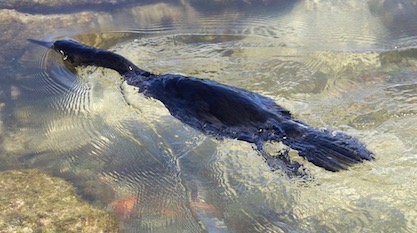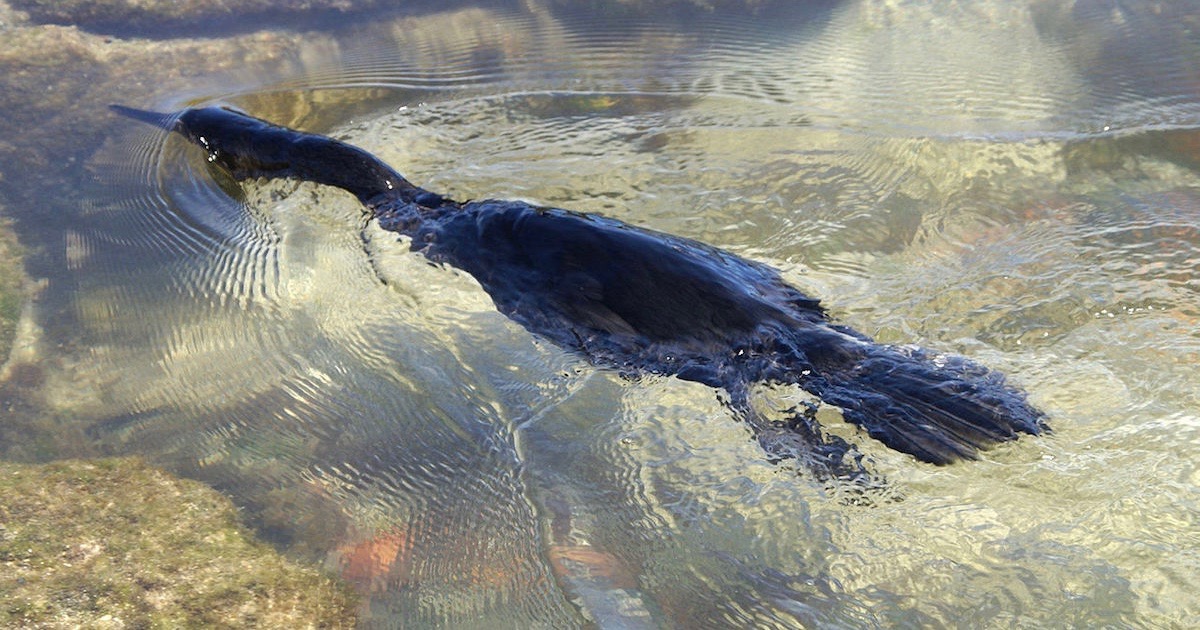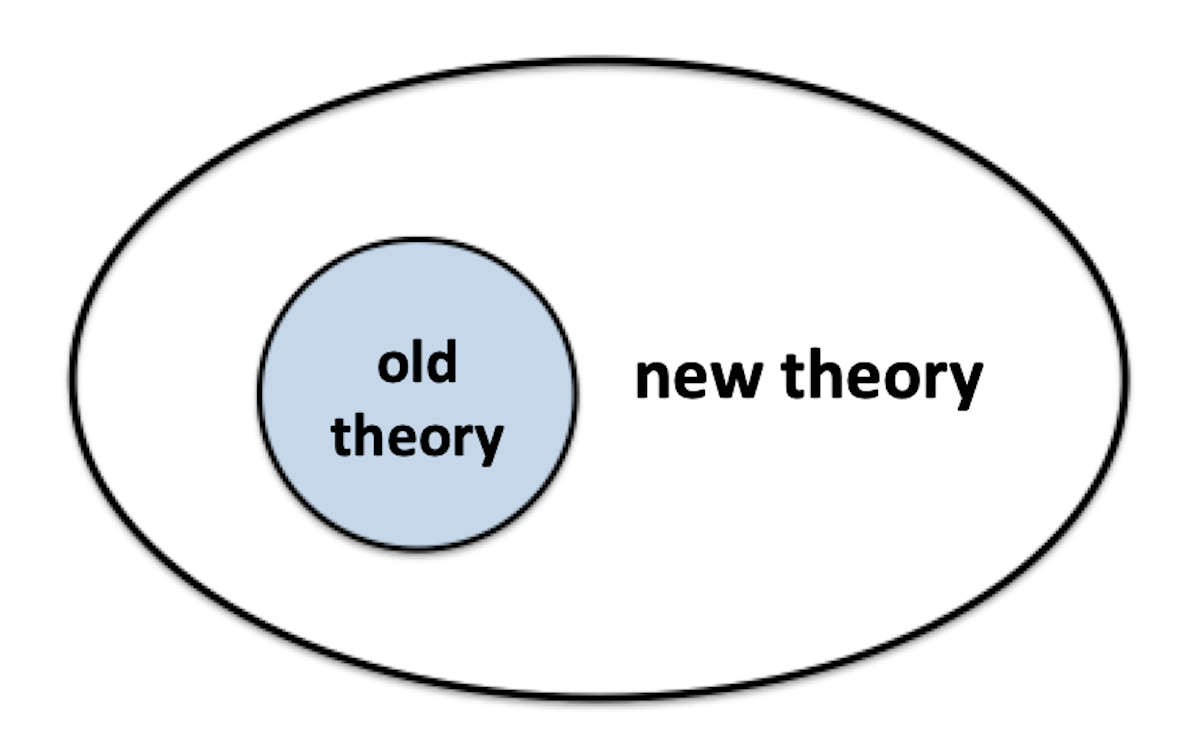 Evolution
Evolution
 Intelligent Design
Intelligent Design
I Disagree with David Klinghoffer, But It’s My Fault for the Confusion


In a post yesterday, David Klinghoffer cited my comments in a recent podcast and described his own view that intelligent design could be considered as a theory of evolution, making the point that intelligent design tries to explain the innovations that happened in the history of life (e.g., the origin of life itself, the burst of complexity during the Cambrian explosion, etc.). I’d describe the situation a little differently.
Evolution is an implication — that is, an empirical consequence — of design.
Design is the more general (i.e., comprehensive) idea, and the well-understood phenomena usually designated as “evolution” are in fact consequences of designed systems undergoing or responding to perturbation. If anything, then, it would be more accurate to say that “evolution is a sub-theory of design,” no matter how strange that may sound at the moment. Design is the big circle; some patterns of evolution fall within it.
A Future Theory of Design
Other aspects of “evolution,” which are not currently understood or explained — e.g., the unsolved problem of the origin of animal body plans — would not be subsumed by a future theory of design, because nothing coherent and well-tested exists to incorporate as established or reliable knowledge. The wild and contradictory alternative evolutionary proposals, for instance, explaining how the chordate, molluscan or arthropod body plans first came to be, represent a hodge-podge best abandoned in the airport terminal with the unclaimed luggage.* Travel light, move on.
Some unsolved problems in science have that status because more work is needed, within an otherwise stable framework. Other problems, by contrast, remain unsolved because they are predicated on false assumptions. The larger framework is collapsing. Still more effort — if conducted under those false assumptions — will be unavailing. The Neo-Darwinian Synthesis assumed that the natural selection of small-scale variations, of the sort Charles Darwin promoted as the raw materials for all descent with modification, accumulating over time, would give rise to major changes in form and function. Jerry Coyne, Deborah and Brian Charlesworth, and Nicholas Barton, still believe that.
The November 2016 Royal Society meeting on the Extended Evolutionary Synthesis, however, was convened in large measure because a sufficiently great number of other evolutionary biologists no longer bought into the neo-Darwinian assumption. They might find some other parts of evolutionary theory sound and useful, but not its failures to solve the problem of animal macroevolution (or other such unsolved problems). Travel light, move on.
Slap a Sticker on Futuyma?
So, when I said, in the “deliberately provocative” podcast series on my Galápagos visit, that ID should incorporate the best of evolutionary biology, what I did not mean was that we should simply slap a colorful ID sticker on the cover of Douglas Futuyma’s textbook Evolution, and call it a day.
Rather, those evolutionary insights which all design advocates recognize as true — for instance, that every species, every organism on Earth, has a history, whether we know that history in detail or not — will belong in any future account of design. Like it or not (and I expect some readers will not like it), that valuable “organisms have histories” insight is much more the product of Charles Darwin’s thinking than it is of any natural theologian, such as William Paley. Disliking Darwin and his intellectual offspring, for whatever reason, will not make the proposition “organisms have histories” go away. That insight is true, and true things survive.
New and Old Theories
The maverick philosopher of science Paul Feyerabend (1924-1994) included a pair of figures in his very deliberately provocative masterwork Against Method (1975), which are worth reproducing here. The first (Figure 1, below) shows the standard picture of how new theories incorporate older theories. The new theory, with greater and more accurate empirical content than its predecessor, takes in the older theory as a special case.

Fig. 1. Standard model (logical schematic) for theory succession in science.
Feyerabend saw that picture as a philosophical myth. What really happens, he said, if one tries to represent the situation schematically, is much closer to Figure 2 (below). The new theory incorporates some of the content of its predecessor, but much, or most, of the older theory doesn’t survive, and fades into scientific history.

Fig. 2. Feyerabend’s model of partial overlap between new and old theories.
You can be sure that any future textbook of ID will include much that, in altered form, to be sure, will nonetheless be recognizable to an evolutionary biologist of 2020. Science never wipes its slate completely clean. This works. But that over there does not — and the new theory explains why. Keep the stuff that works.
* I’m not joking about wild and contradictory. At the link, one will find evolutionary biologist Stuart Newman concluding that “natural selection is not responsible” for producing novel traits, and thus no “elaborate or farfetched adaptationist narratives” are needed “to account for their existence.” Click on the link to the 2017 Charlesworth and Barton article, however, at the end of the next paragraph, and one will learn that “allele frequency change caused by natural selection is the only credible process underlying the evolution of adaptive organismal traits.” Bob says ~NS, Alice says NS. Both cannot be right, although both could be wrong: D might be the case.
Photo: A flightless cormorant, endemic to the Galápagos Islands, by putneymark / CC BY-SA.
